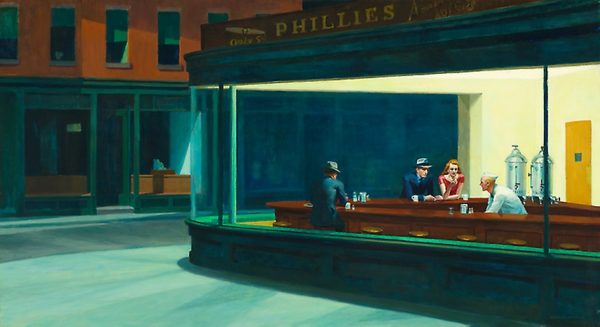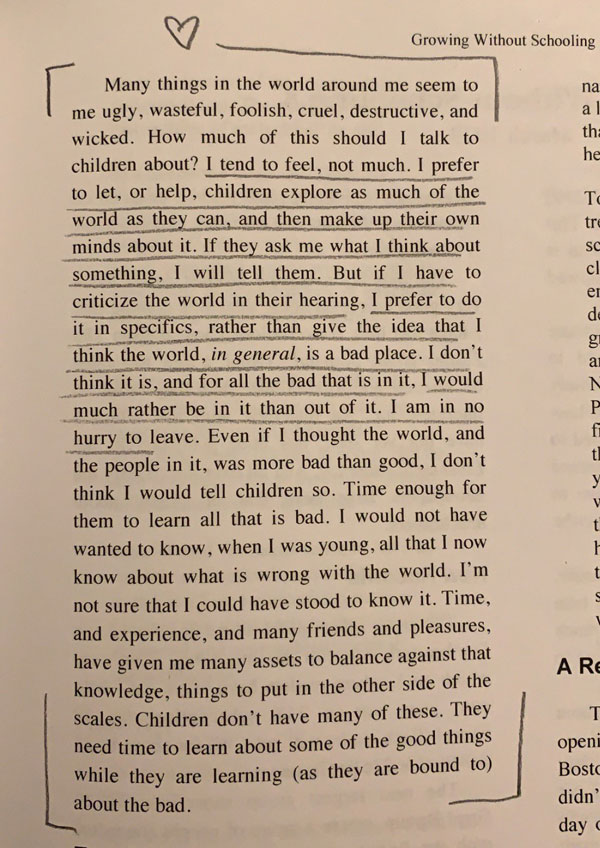
Sometimes I start a collage in my diary but then I just let it sit until it tells me what else it wants. (This one was started around Christmas.)


Sometimes I start a collage in my diary but then I just let it sit until it tells me what else it wants. (This one was started around Christmas.)


I’m coming up on my last days in the office of the house we’ve been renting for the past few years. It’s so peaceful in there — I was editing a client video today, and it felt hard to believe that anything ugly was going on in the world. Very grateful for this room of my own, and even though I’m about to build a new backyard box to work in, I will miss this bliss (way)station.
Editing a client video while the world rages ???https://t.co/RUJMNf9ZU1 pic.twitter.com/i4x4G1UIxp
— Austin Kleon (@austinkleon) January 12, 2021

This morning my neighborhood filled with the whoops of Texan children running out into the snow. For some of them, it might’ve been the first snow they’d ever seen in real life. (One kid exclaimed, “It’s like slo-mo rain.”) I’ve lived here for 14 years and I’ve never seen it snow like this.
I’ve lived in Austin for 14 years and I’ve never seen it snow like this. Incredible. pic.twitter.com/WJqoYqSlTm
— Austin Kleon (@austinkleon) January 10, 2021
First, I went to go check on Coconut The Owl, who didn’t look thrilled, but was hanging in there:

Then, we dug mittens and boots out of the closet and had a bonafide snowball fight. We also made a Coconut out of snow:

And now we’re inside and cozy and I plan on doing nothing for as long as possible.

Every time it snows down here I think of this line from Lonesome Dove:

A moving mixture of personal memoir and art writing, Olivia Laing’s The Lonely City looks at the topic of loneliness by weaving her own story of a rough stay in New York with the work and stories of four different NYC artists: Edward Hopper, Andy Warhol, Henry Darger, and David Wojnarowicz.
This is a book you might want to read with a laptop nearby so you can study some of the artworks that come up along the way, even something like Hopper’s Nighthawks, which you’ve probably seen dozens of times, but have you really looked? (Something I never noticed that Laing points out: there’s no visible door to the outside.)

You might also put on this YouTube playlist and pull up this pinboard to get a visual representation of some of the books’ contents:
I read this back in 2016, but I imagine it has a different and maybe even deeper resonance for readers during a pandemic. Not long after finishing the book an acquaintance of mine mentioned that she’d been alone for a couple of weeks recently and sort of forgot what it was like to function in the world, something Laing writes about:
If you are not being touched at all, then speech is the closest contact it is possible to have with another human being. Almost all city-dwellers are daily participants in a complex part-song of voices, sometimes performing the aria but more often the chorus, the call and response, the passing back and forth of verbal small change with near and total strangers. The irony is that when you are engaged in larger and more satisfactory intimacies, these quotidian exchanges go off smoothly, almost unnoticed, unperceived. It is only when there is a paucity of deeper and more personal connection that they develop a disproportionate importance, and with it a disproportionate risk.
This is one of the themes of the book: when you most need intimacy — the opposite of loneliness — not only is it nowhere to be found, but the longer you stay away from it, the less and less you are equipped to bring it about. I would also add that the times you feel like a little disconnection, it’s impossible to get it — there were several times when I was distracted from reading the book by the hollering din of my wife and kids from across the house that I thought, “Gee, a little loneliness — or at least solitude — might be nice.”
Laing quotes from The Philosophy of Andy Warhol:
At the times in my life when I was feeling the most gregarious and looking for bosom friendships, I couldn’t find any takers so that exactly when I was alone was when I felt the most like not being alone. The moment I decided I’d rather be alone and not have anyone telling me their problems, everybody I’d never even seen before in my life started running after me…. As soon as I became a loner in my own mind, that’s when I got what you might call a ‘following.’
In “Open House,” off Songs for Drella, Lou Reed sings of Warhol, “I like lots of people around me… but don’t kiss hello and please don’t touch.” Laing writes of Warhol’s use of machines to distance himself from too much intimate contact — stick a tape recorder or a camera in between you and the person you’re interacting with, and it serves as a kind of filter:

Collage comes up a lot in the book — gluing broken or different things together — and it turns out that some of Henry Darger’s process wasn’t all that different from Warhol’s:
[Darger] started with found images, sometimes backing them on card or doctoring them in subtle ways, especially by painting over them, adding hats or costumes, or simply piercing the eyes. Next, he progressed to collages, cutting images out of newspapers and magazines and pasting them into increasingly complex composites. The problem with this technique was that each component image could only be used once, meaning that he had to find more and more raw materials, either at the hospital or by going through the trash. It was wasteful of resources, and also frustrating, having to surrender a favoured image, to commit to just one picture, just one scenario.
This is where tracing came in. With tracing, he could liberate a figure or object from its past context and reuse it dozens if not hundreds of time, inserting it by way of carbon paper into a diversity of scenes. I t was economical, a thrifty process, and it also let him magically posess the image in a way that scissors didn’t, transferring it first on to tracing paper and then again through the blue sheets of carbon into the painting proper. One of his favourites was a doleful little girl holding a bucket, one finger in her mouth. Once you’ve spotted her, she crops up over and again…
I knew nothing at all about David Wojnarowicz when I first read the book. His story, and the story of how AIDS basically decimated a whole NYC subculture in the 80s and 90s, was the one I found most moving in the book. (Laing quotes a lot from his memoir, Close To The Knives, and later wrote a very moving piece about his work in Funny Weather, also putting his face on the cover.)
So, other than art, how does one combat loneliness? What types of connection should we look for? In his great review, Dwight Garner quoted Laing on checking her Twitter feed (she quit Twitter a few years ago, but her Instagram is lovely):
“It was the first thing I looked at and the last, this descending scroll from mostly strangers, institutions, friends, this ephemeral community in which I was a disembodied and inconstant presence. Picking through the litany, the domestic and the civic: lens solution, book cover, news of a death, protest picture, art opening, joke about Derrida, refugees in the forests of Macedonia, hashtag shame, hashtag lazy, climate change, lost scarf, joke about Daleks: a stream of information, sentiment and opinion that some days, most days maybe, received more attention than anything actual in my life.”
Sometimes the data stream makes her feel joyous. “At other times, though, the whole thing seemed insane, a trading-off of time against nothing tangible at all: a yellow star, a magic bean, a simulacrum of intimacy.” Civic as well as personal space has been circumscribed. Ms. Laing describes Manhattan cafes “populated almost exclusively by people gazing into the glowing clamshells of their laptops.”
It’s interesting, looking back at my notes, the few things that I took here and there for Keep Going. For example, this quote about walking from Greta Garbo, taken out of its rather dark context (Garbo was stalked and photographed by a paparazzo):
“I would rather be outside walking that to sit inside a theater and watch a picture moving. Walking is my greatest pleasure.” And again: “Often I just go where the man in front of me is going. I couldn’t survive here if I didn’t walk. I couldn’t be 24 hours in this apartment. I get out and look at the human beings.”
Laing herself sums it up: “What matters is kindness; what matters is solidarity. What matters is staying alert, staying open…”
There’s so much good stuff in the book, I can’t begin to quote it all, or explain how it all weaves together. Here are my little brick notes I took while reading:

* * *
Every Saturday I put one of my favorite books on the Bookshelf. To see more of my favorite books, check out my reading years.

I have a friend who saw a Smokey The Bear “ONLY YOU CAN PREVENT FOREST FIRES” poster when she was a kid and took the emphasis literally. She said she started worrying all the time about forest fires because only SHE could prevent forest fires — it said so on the poster! She’d see a story about a forest fire on the news and cry, “It’s my fault!”
I think about that story a lot these days.
How are parents talking to young children about today, if at all?
— wendy macnaughton (@wendymac) January 7, 2021
How much do we talk to our kids about what’s going on? How much information do you give them, especially about the things they can’t control?
* * *
Last summer, the boys had drawings published in the NYTimes. I loved working on this piece, which was about how powerful making art can be in uncertain times. “Much of the art they make is their way of processing fear and anxiety about the uncontrollable terrors going on outside our house,” I wrote.
A producer at Good Morning America saw the drawings and asked if they could interview the whole family. I said no to having them on camera, but I agreed to a solo interview. We talked for 45 minutes to an hour over Zoom. We covered lots of stuff. I tried to encourage her to think of art as a way of exploring emotion as much as expressing emotion, but she kept asking me, “Aren’t you worried about your kids? Aren’t you disturbed by these drawings?” I finally, almost shouting, said, “No, no, no! I would be more worried about them if they DIDN’T draw.”
Here is the final piece, in which they turned children’s drawing into a tool of emotional surveillance:
Parents should pay extra attention to the way their kids are expressing themselves through art during these challenging times, according to a NYT story. @DebRobertsABC has more on how drawings may be revealing their COVID-19 anxieties. https://t.co/1G5yVu3wzO pic.twitter.com/yl84xrGdWZ
— Good Morning America (@GMA) August 4, 2020
Pro tip: if you want your kids to be less anxious, don’t let them watch an hour of morning news waiting to see their drawings on TV! My boys had never seen TV news, and they couldn’t believe their eyes. “More tornados!” shouted Jules, who eventually left the room before his segment appeared.
The experience shook me, but it was a good lesson.
* * *
When I was reading old issues of John Holt’s Growing Without Schooling newsletter, I came across this piece he wrote in 1979. “Many things in the world around me seem to me ugly, wasteful, foolish, cruel, destructive, and wicked,” he begins. “How much of this should I talk to my children about?”

W.H. Auden, in his essay about Iago in The Dyer’s Hand, makes this life-changing distinction: Instead of asking yourself, “What can I know?” ask yourself, “What, at this moment, am I meant to know?”
Our boys (now 5 and 8 — age makes all the difference when you’re talking about “children” or “kids”) don’t do Zoom school and we still don’t watch news on the TV, so they have no idea, really, about what’s going on, other than what we tell them.
And we don’t tell them much.
I realize this is an enormously privileged position to be in.
“I am trying / to sell them the world,” Maggie Smith wrote in her poem, “Good Bones,” but I’m not trying to sell my kids the world, I’m trying to make them a world.
I am trying to give my kids the sanest childhood I can. I am trying to give them an experience of a safe, non-judgmental home, full of love and books and art-making, arranged so that they can spend maximum time doing things like drawing and playing and dreaming.
Because I think a good, healthy childhood is something that can’t be taken away from you. Knowing that you are safe and loved is something you can carry forward, no matter what happens.
My hope is that if my boys know what it is to be loved and cared for, to be accepted and to have agency over their attention and their efforts, they won’t go looking for identity in dumbass facist ideology peddled by pathetic men who have nothing real to contribute to the world.
“It’s easier to be a parent this morning.” pic.twitter.com/zQ00S1gXrw
— Austin Kleon (@austinkleon) November 7, 2020
They’ll start knowing how insane the world is soon enough. For now, let them play.
And if it all goes bad in the future and they have to fight over a can of beans in an abandoned grocery store, they will remember what life can be like.
That knowledge is important. It’s knowledge that artists give us: They don’t just show us what life is, they show us what it can be.
Parents can be artists, too.

This site participates in the Amazon Affiliates program, the proceeds of which keep it free for anyone to read.